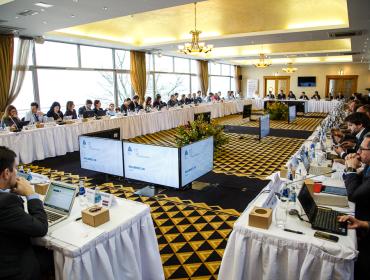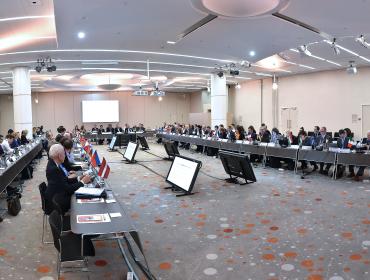
On 24 May 2022 BEREC organised a virtual workshop on Open RAN.
Some event details
Session 1: “An Open approach to telecommunications infrastructure in the RAN”
New technologies, coupled with artificial intelligence and virtualization/cloud, are transforming the notion of a network. Not all virtual RAN is Open RAN and not all Open RAN is open source. Vendors and new market players are working to find the right balance to serve unique demands and requirements.
Does the multi-vendor approach represent a “new normal” for telecommunications infrastructure? Is innovation dependent on Open RAN or are other alternatives (vRAN) sufficient? Is industry meeting the need for collaboration across the full stack (Chipsets, RAN hardware, RAN software, Cloud, Services)? What are the network deployment scenarios/use cases (enterprise/rural/urban/macro spectrum bands) currently tested or planned to be tested for interoperability purposes? What are the key issues regarding site integration, in order to secure seamless coexistence with legacy 2G/3G network equipment located at the site? What are the potential differences in implementing Open RAN in Greenfield and Brownfield scenarios
Session 2: “Benefits and opportunities dashboard”
Open RAN is said to improve network performance and lead to other benefits in terms of vendor diversity, the possibility of new market entry, and support new private networks which may build and operate niche networks.
What are the main benefits demonstrated in trials/pilots/first commercial experiences? What are the main concerns observed in trials/pilots/first commercial experiences? What’s the availability of empirical data about energy usage and energy efficiency? How will network automation yield efficiencies (and benefits) and is there any distinction between what virtual RAN and Open RAN would yield in this regard? Cloud architectures provide scope for economies of scale and cost savings but are the opportunities the same for virtual RAN and Open RAN? Complexity re-integrating everything after having disaggregating it? Can SMEs compete against Multi Nationals? Do tier 1 and 2/3 operators have the same views on benefits/challenges?
Session 3: “Challenges dashboard: security back doors, front doors, and more”
When deploying Open RAN, network operators necessarily focus on security issues. On the one hand, Open RAN could strengthen security by having a wider diversification of equipment manufacturers, contributing to Strategic Measure 5 (Diversification of suppliers; SM05) of the EU 5G Cybersecurity Toolbox. On the other hand, Open RAN brings new security risks that must be considered, like increased vulnerabilities from additional networked components (not to mention integration complexity and various new network configurations).
What are the implications of an increased attack surface and more attack points due to new functions (e.g. xApss and rAPPs) and additional interfaces? How to adapt the certification/accreditation process from competent authorities? What are the implications and possible dependencies on the hyperscalers (cloud-suppliers) outside of EU: what does this mean, and what are the potential benefits and risks?
Session 4: “Regulator and policy maker roles, and responsibilities”
What are the topics that BEREC’s experts should consider picking up in future work?
What’s the latest thinking about potential dominances in Open RAN ecosystem etc (if any) or about barriers to entry to Open RAN ecosystem? Are there blockages to routes to commercialisation for new players? What might be the impact on competition?
There were 234 registrations for the workshop. The workshop was well attended by 194 participants (NRAs, OCAs, European Commission, organisations, associations, operators, vendors, consultants, ministries, governmental agencies, regulators etc.) and BEREC thanks participants for sharing their views.
Here you may find the Summary Report on the workshop, approved by the BEREC Board of Regulators on 6 October 2022, together with the presentations from stakeholders.


